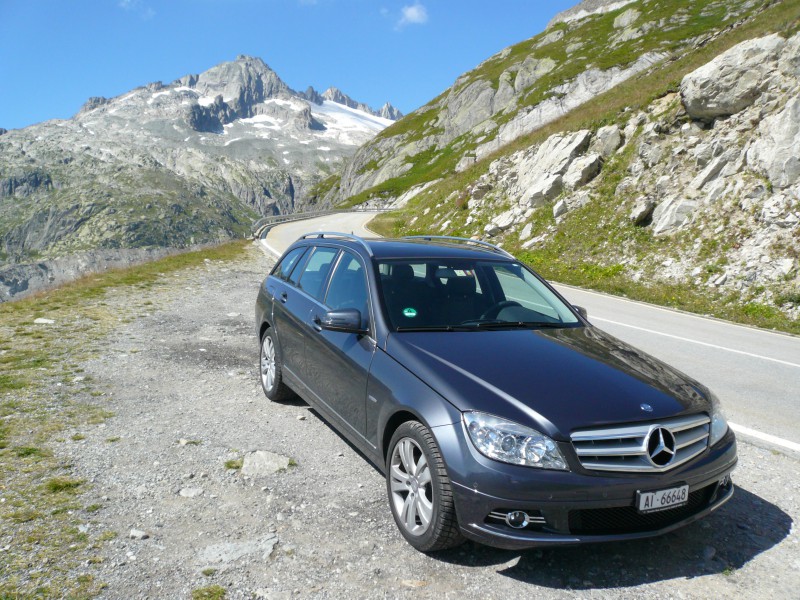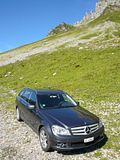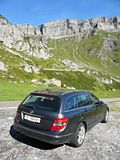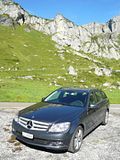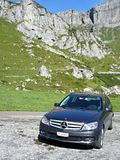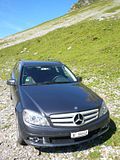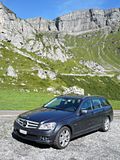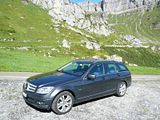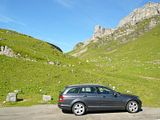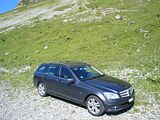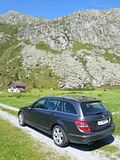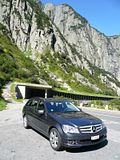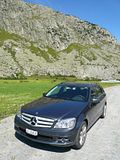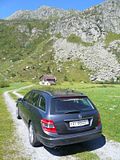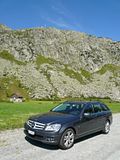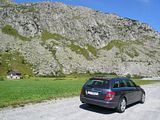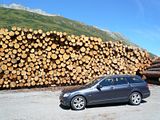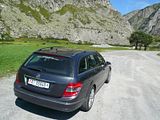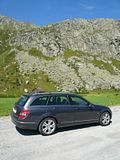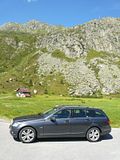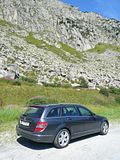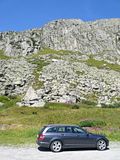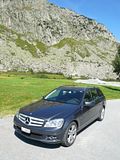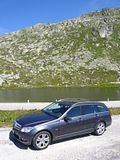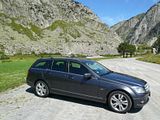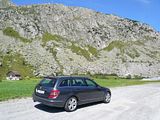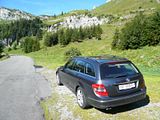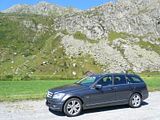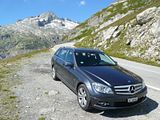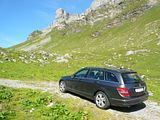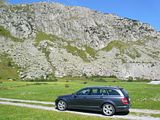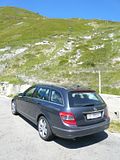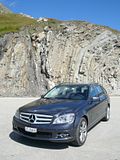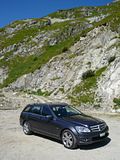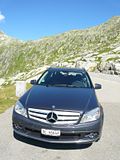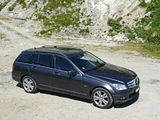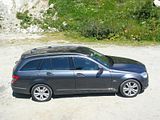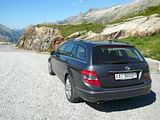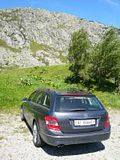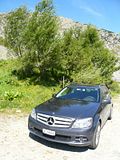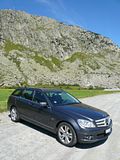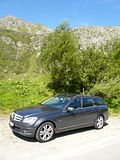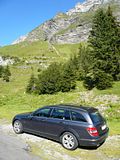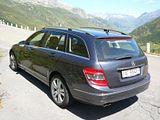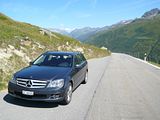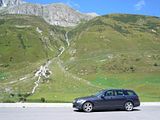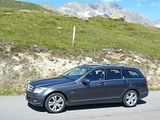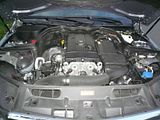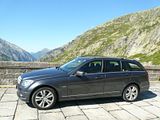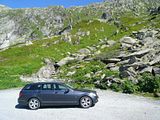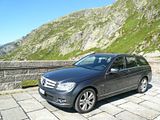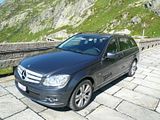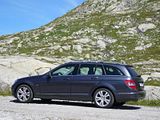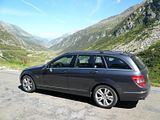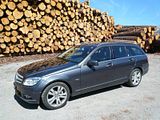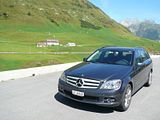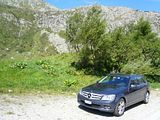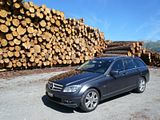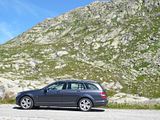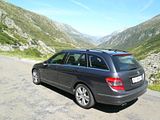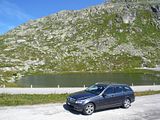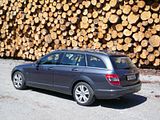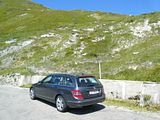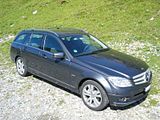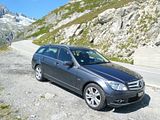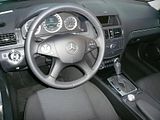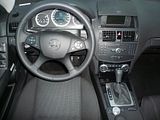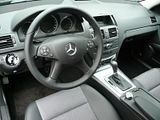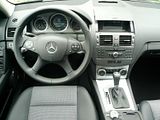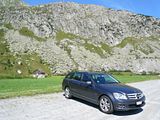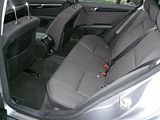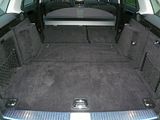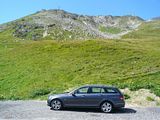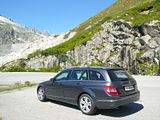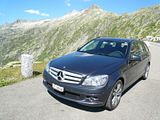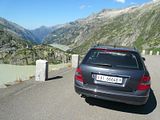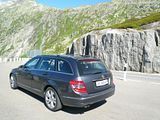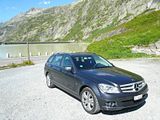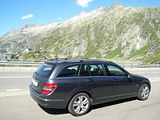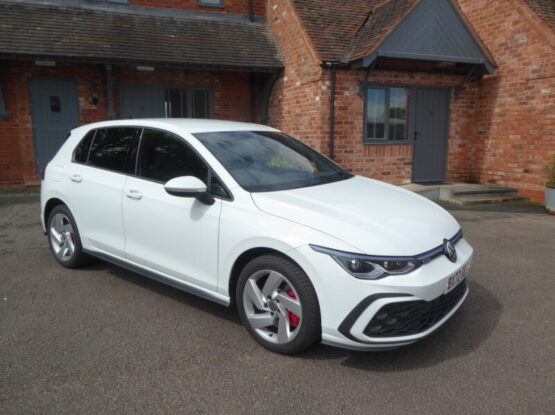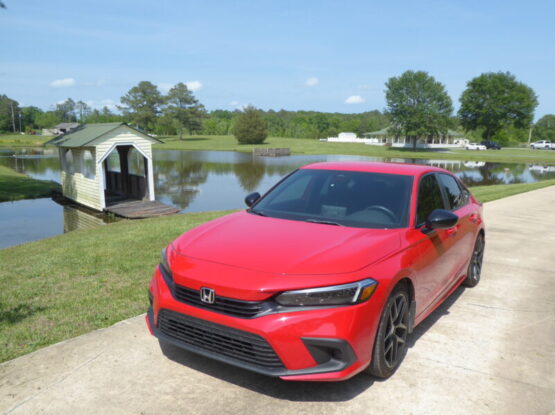One of the hottest battles in the car market these days is between the three German prestige brands with their medium sized cars: 3 series, C Class and A4. Although the German press have a different view, the UK’s motoring journalists have consistently maintained their belief that the 3 series is the clear class leader, with just the odd deviation from this conclusion when the euphoria and hyperbole of the launch of a new competitor causes them to waver from their loyalty to the Bavarian Wunderkid. Certainly, when Mercedes first revealed the W204 generation of the C Class, many column inches were expended in assessing this new car and concluding that it just might actually be better than the BMW. That was a couple of years ago, and since then not only has Audi presented the B8 model A4, but neither the Schwabian nor the Bavarian manufacturer has stood still, with constant innovation to their products, much of it focused on efficiency and the need to get the CO2 emissions numbers as low as possible to keep the vitally important UK company car buyer happy. I’ve not driven a W204 model C Class at all, so was very happy when Mr Sixt offered me one for the weekend. The test car came in Estate format, which – in my opinion – actually looks better than the saloon, avoiding the slightly awkward rear end of the three box car. The paperwork said “C180 Kompressor” and I was informed it was an automatic. When examining the car for any damage, I spotted small badges on the front wings which proudly proclaimed “Blue Efficiency”.
Inspection of the outside complete, it was time to get in and prepare to depart. Immediately, there seemed to be a problem, as having put the steering column as high as it would go and as far in as possible (the settings I usually need), I tried to adjust the seat forwards. Fiddling with the buttons on the side of the seat only seemed to adjust height and angle. This spec of C Class has a manual adjuster for back and forth, I found out, but when I tried to pull the seat forward, it would not go anything like forward enough. Closer investigation revealed that with the seat set low (also a setting I need), the seat base was catching on the floor mat. The only solution seemed to be to lift the seat, then pull it forward, and then lower it again. Not a problem I’ve ever encountered before, I have to say.
For some time now, the actual engine size in a Mercedes bears little relation to the number cited in the model name. Even so, I was somewhat surprised to learn that the latest Blue Efficiency C180K is actually fitted with a 1600cc engine, this having been substituted for the previous 1800cc motor, in the quest to reduce emissions. It develops 156bhp, which is not a lot when it has to propel a large car like this one. That the C180K is not fast became apparent pretty quickly. Before I had even exited the Rental Car parking garage at Kloten airport, in fact. To get out, you go a couple of levels up the central spiral ramp in the garage, and no car I have previously taken out of there seemed to find it so difficult. Part of the blame, of course, could be laid at the door of the automatic gearbox, as I suspect that it was trying to stay in too high a gear, but the Mercedes more or less ground to a complete halt on what is not a particularly steep ramp and had to be revved quite hard just to get it up the incline. I also experienced frustrations when out on the autobahn, and wanting a burst of acceleration to pull out and past a slower vehicle. Put your foot down and nothing much happens. Push your foot down much harder and the gearbox shifts down a couple of gears and the car does gain speed, but not exactly quickly. The pay-off may just be reasonable economy. Driving at a fairly steady speed on the Austrian autobahns for a day, the trip computer reported 7.1 l/100km, which is around 40mpg, a commendable figure for this sort of car. You can imagine that all this made me somewhat apprehensive about taking the car up into the Alps. Surprisingly, it acquitted itself better than I was expecting. Clearly the engine had to work quite hard to maintain momentum on the steeper sections, and the fuel economy tailed off by some 25%, but it was not the nightmare I feared it would be. I did however, note that the throttle action was a bit “sticky”. You had to press quite hard to get any initial movement, which is not always something you want to be doing when there is a steep drop over the side of the road not far away from your starting position!
The test car came with a 5 speed automatic gearbox. This is not standard, but I was grateful for it, as the C Class also has a foot operated parking brake, and I recall from my last C Class rental car that managing hill starts especially when parking, requires three feet. With the automatic, the issue largely goes away. You can shift between “Comfort” and “Sport” setting for the gearbox by pressing a button to the left of the shift lever, though it did not seem to make much difference. There is also a feature allowing you to shift up and manually by tapping the lever left or right when it is in Drive. I just resorted to a firm boot of my right foot when I needed that sudden burst of acceleration. Apart from these occasions, the changes were smooth and only detectable by the change in engine note. Nothing wrong with the steering and handling, but in both respects the C Class would easily be beaten by the humble Mondeo, which offers far more feel and more fun. The steering is light, but it is also pretty devoid of much real sensation as to what the wheels are going to do. The C Class rides well and it is quiet and relaxed when cruising. I have to say that driving (briefly) with the window lowered, the noise from the car is not a pleasant one. There’s no trace of supercharger whine (maybe I was not pushing it hard enough), but it certainly does not generate the aural pleasure that would come from a 6 cylinder car. No problems with visibility, an aspect where estate cars generally beat the saloon relative, and in any case, there were parking sensors front and rear that beeped not just in car parks but also approaching toll booths. As the test car – admittedly pretty new – was actually undamaged, perhaps they are actually of use to other rental car drivers.
The car featured in most of the photos is not actually the car with which I initially started. That one blew a rear indicator light before I had even got out of Zurich, so I took it back and swapped it, having only driven it 25km. I had, however, done the interior pictures and when I sat in the second car, realised that they were indeed different. The first one was in SE spec and the second one in Sport spec. Inside the cabin, two differences are immediately apparent: the Sport has seats which are part “leather” (actually, the material is Artico, Mercedes’ artificial leather, if that is not a pure oxymoron), whereas the SE model has the outer part of the seats in some particularly horrid stuff which is as bad as you find in almost all cars without leather seats these days. Second difference is the dash inlays in the SE were in ebony black whereas in the Sport, they are in brushed aluminium. Whereas I prefer the Sport’s seats, the brushed aluminium does not work as well in this car as it does in my own Audi. The only other difference from the cabin is that you can see the three pointed star on the bonnet of the SE, whereas on the Sport, it is in the centre of the grille. There are other external differences, too, of which the wheels are the most obvious, though trim items on the bumpers and round the fog lights are all well documented on Mercedes’ web site for anyone who wants to know precisely what distinguishes an SE from a Sport and from an Elegance for that matter.
The overall feel to the inside of the car is definitely “Mercedes”. It is nicely finished, with good quality plastics, and it avoids the impression of being over fussy (with the exception of the rather flimsy lid that pops open to reveal the display for the sat nav and stereo system), but somehow, it just does not have the same air of quality as you would find on the equivalent Audi, or the same dash of national (and very different) style you would get in an Alfa or a Volvo. There is a single instrument binnacle with three dials in it – rev counter, speedo and one containing fuel and temperature gauges – which look well presented, but with only even numbered increments of 20 in the speedo, and some rather thick lines for every 5 km/h in between, judging 50 km/h was not that easy. In true Mercedes form, there is a single column stalk on the left, which does indicators and wipers, set low, and above it the cruise control stalk. More than once I went for the latter by mistake. The wipers – much needed on a very wet test day – are set by twisting the end of the stalk, but do have a rather useful auto sensing function, which was all I used. There is a collar on the next piece of the stalk to help you to feel the bit you need to twist for the rear wiper. A multi-function switch on the dash handles all light functions. The centre of the dash contains the stereo controls and the air con system. The stereo display is in the sat nav system, and I found no way of displaying the sat nav without having the stereo on (albeit with the volume turned right down), which may be my ignorance rather than how it really is.
Although almost all cars have continued to get larger with each successive model generation, few have ended up with any more space inside them. The exception seems to be the cars of this class, as the early 190/C Class Mercedes, along with their BMW and Audi competitors were constantly criticised for the fact that there was not enough space in the back. That is definitely not the case with the W204 models, with ample rear seat space for three passengers. There is a good sized boot, too. The rear load cover is retractable, and is easier to operate than many of its type, as the edges slide along two channels until the cover is fully extended. There are two small nets at the side of the luggage area in which odds and ends could be secured and there is a very shallow underfloor area for tools and the like. The rear seat backs – split asymmetrically – fold forward onto the cushions, to extend the luggage space. As far as I could tell, the rear load cover is attached to the larger of these two entities, so when the backrests are dropped down, this provides some extra protection against the front seats. Inside the cabin, there are door pockets, a two level glove box and a small central cubby area under a roller cover.
There is much to like about the C Class Estate. It looks good, it appears well built, it was quite refined, and had plenty of space in it. But I could never recommend one with this engine. The C180K Blue Efficiency is simply too weedy for the car. The quest for a low emissions number is all very laudable, but when it makes the car so sluggish, for me at least, it makes the car a non-starter. I suspect that the C250 CDI is a rather better bet, and I’ve now got to figure out how I can source one of those to test.

